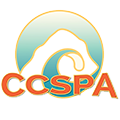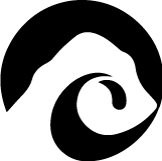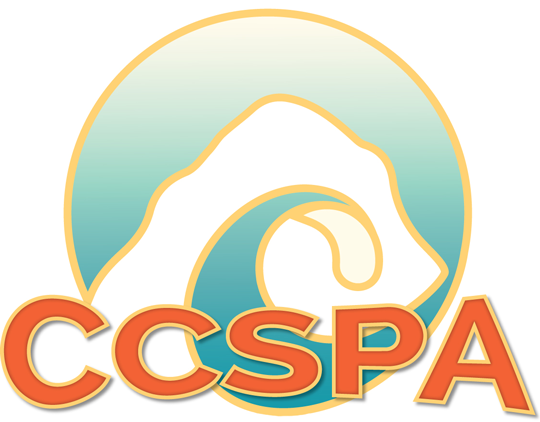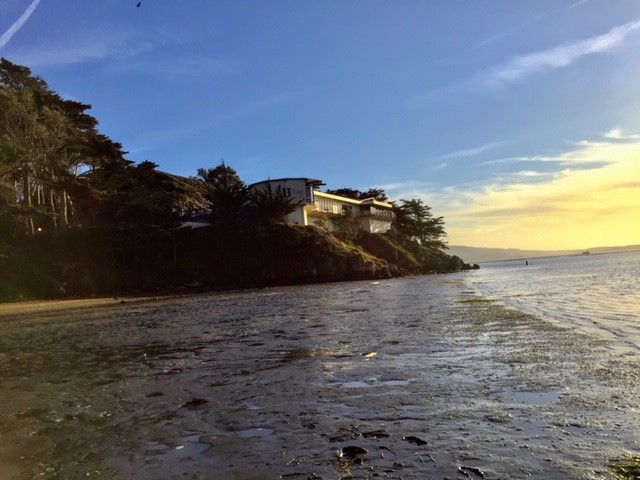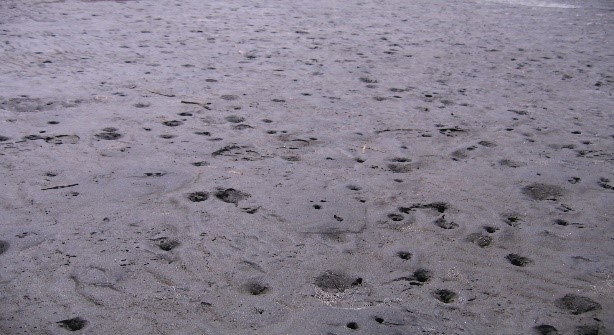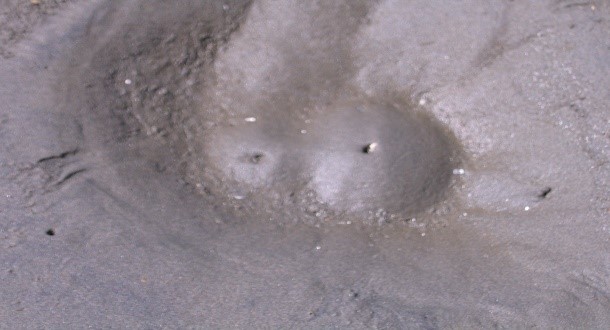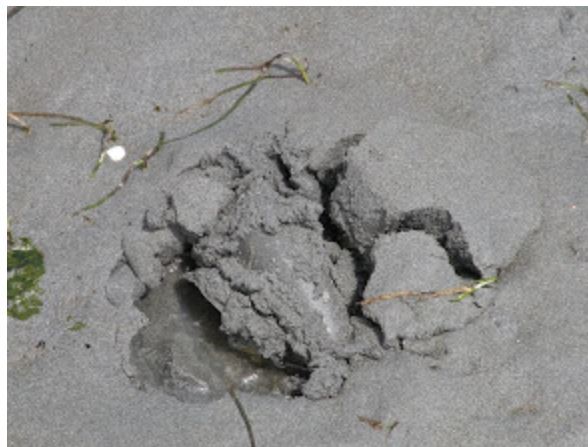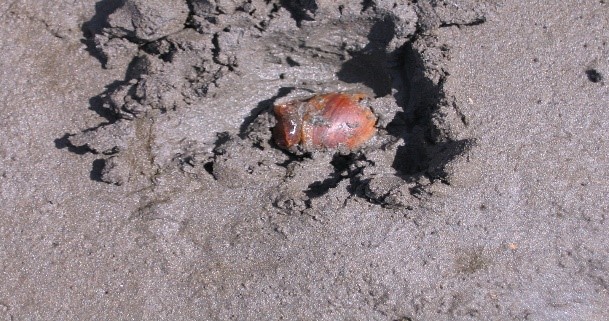Windy Cove, below the Morro Bay Museum of Natural History, contains a mud flat within Morro Bay. This mud flat can be very extensive on a low tide, especially if it is during King Tide season (Fig 1)
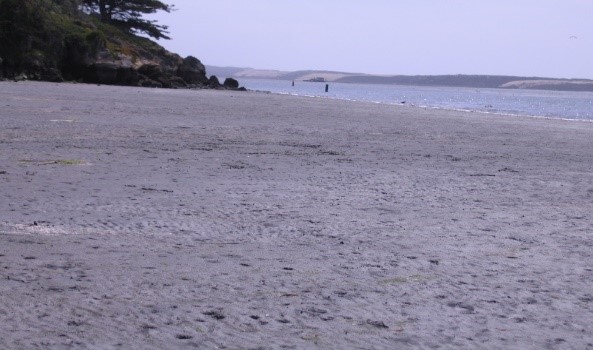
What looks like an expanse of mud with holes in it is marine mud, chocked full of interesting organisms, both on the surface and below. A closer look shows the different types of holes found within the mud (fig 2)
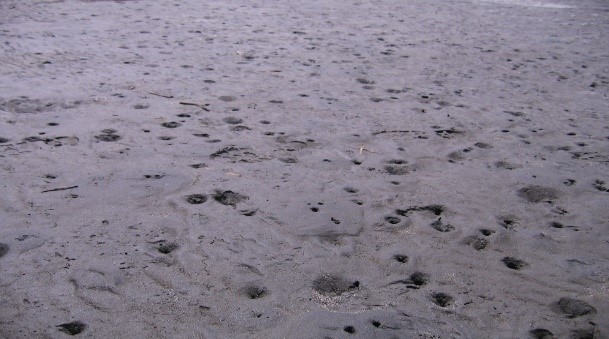
Different holes tell different stories, and this series will be about those different stories. But first, look at what is normally found on the surface of the mud and what helps drive the life cycles of the organisms.
Surface plants and algae provide nutrients, cover and stabilization to the mud and its organisms. The marine plant, Zostera, or eel grass, is of major importance to the mud ecosystem. Its roots provide stabilization to the mud and cover for lots of different marine larvae to hide and develop, while its leaves provide food, cover and attachment for many small organisms. Even in death, Zostera provides breakdown products, such as sulfur, that help with development of a rich source of nutrient for bacteria that serve as the basis of the nutrient cycle in the mud. In Windy Cove, there has been an increase in the eelgrass in recent years due to the efforts of the National Estuary Program to plant and reestablish greater amounts of the plant in the bay. Fig. 3 shows the most recent extent of the Zostera right in the cove itself. You can find out more about eel grass through the archived blog posts from NEP at https://www.mbnep.org/blog/
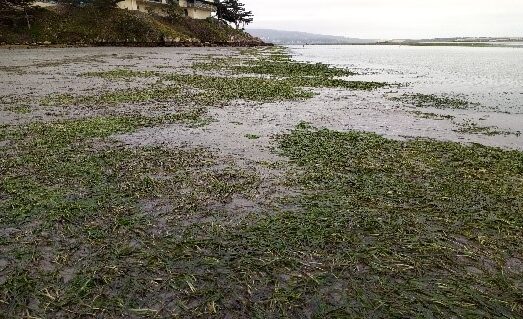
Marine algae play an important role in the mud ecosystem as food sources, cover and breakdown products. Three major algae do well on the mud: the green bladed Ulva lactuca, or sea lettuce (Fig 4), the green filamentous Ulva intestinalis or maidenhair, and a red alga, Gracilariopsis, known as Ogo or California limu (Fig. 5)
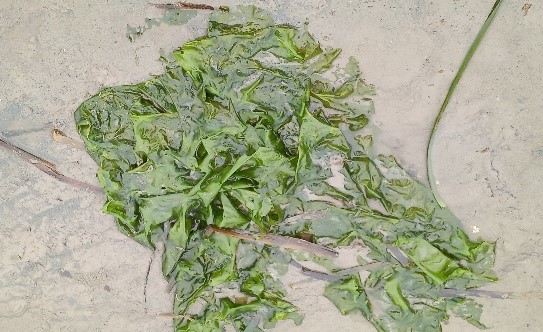
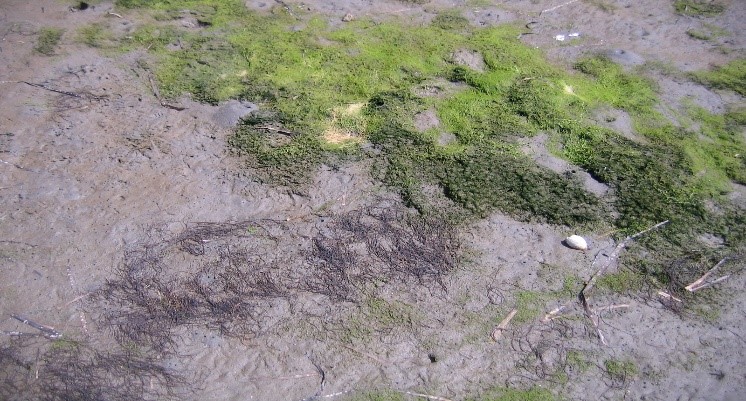
Fig 5 shows maidenhair and ogo algae as well as a darker green mass that is mud-coated thick filaments of a blue green alga that I can’t identify (!) The more golden-colored mud on the left side of the photo is masses of golden-brown algae called diatoms—yum! Good food for organisms that scrape the surface.
Back to the hidden organisms and mud holes. Each hole indicates an organism below—clam, snail, worm, shrimp, fish—and some of these can be identified by the type of hole made. Ghost shrimp and mud shrimp make what we call volcanoes. These are easily identifiable and often present by the hundreds spread across the mud flat. You can see several in Fig 6, and Fig 7 is a close-up of two of them. There will be more information on these two shrimps in another story.
Most of the other holes are called “clam shows” and they are the result of the clams sending their siphons to the surface when the water is covering them so they can filter the water for food and oxygen. It is difficult to tell what clam is down there unless it is dug up—something we don’t do. Birds do it all the time by sticking their different length beaks down into the holes and pulling out whatever they can grab. There will be stories on these holes and the clams they house later on. Small holes can be worm holes or smaller clams—more later, too. Fig 8 is a siphon sticking out of the mud, slightly under water.
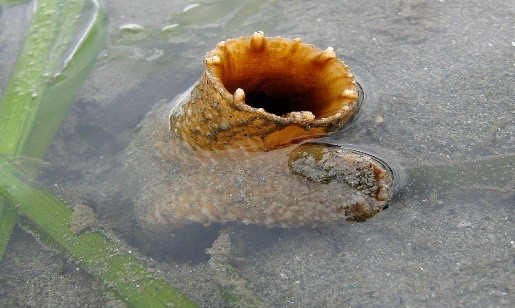
Another type of mud disturbance, a mud buckle, is shown in Fig 9. This indicates that there is either a moon snail or a bubble snail below the surface. Both of these snails stay under the mud surface and plow along until the water comes back in or it is dark out. Then they come to the surface and scrape mud or algae for their food. Predators like both of these snails, so they are wise to stay below. Fig 10 shows the secret hidden below the mud buckle–in this case a bubble snail. More later!!!
All photos courtesy of Marlin Harms and Faylla Chapman.
